The Checklist
2.1 Guide/ accompanying note
The ‘Checklist indoor bicycle parking’ was developed to support professionals in realizing high-quality indoor bicycle parking facilities. The checklist offers a practical, step-by-step approach that helps design and build facilities that are attractive, safe, and user-friendly.
This checklist is intended for policymakers, developers, urban planners, architects, mobility consultants, and other stakeholders involved in bicycle parking solutions. This makes the tool valuable for any party lacking the necessary knowledge, time, or resources to develop their own design guide.
Creating good indoor bicycle parking facilities is essential for encouraging proper bicycle parking behaviour and reducing the nuisance caused by incorrectly parked bicycles at ground level. The checklist helps to map out all the important aspects of a bicycle parking facility, with the goal of making it as easy as possible for all cyclists to use.
2.2 How to use
The checklist is designed to help users develop high-quality indoor bicycle parking facilities in a structured and practical way. The checklist consists of various themes, each with a number of qualities essential for the success of a facility. These themes together form a system that systematically addresses the most important aspects of a facility, step-by-step, from initiation to design details. Each quality can be achieved by implementing specific measures. The following explains how the checklist is structured and how users can apply it.
Themes
The checklist is structured around six themes:
- Target Group: Who is the user and what type of indoor bicycle parking facility is suitable?
- Surroundings: How does the facility fit into the spatial context?
- Access: How easy and safe is access for cyclists?
- Inside the Facility: How functional and comfortable is the design?
- Operation: How will the facility be managed and maintained?
- Sustainability: How does the facility contribute to a sustainable future?
The checklist can be used as a manual when drawing up plans or reviewing designs. Systematically work through each theme and make well-considered choices. The themes and quality requirements within the themes are explained in the following chapter.
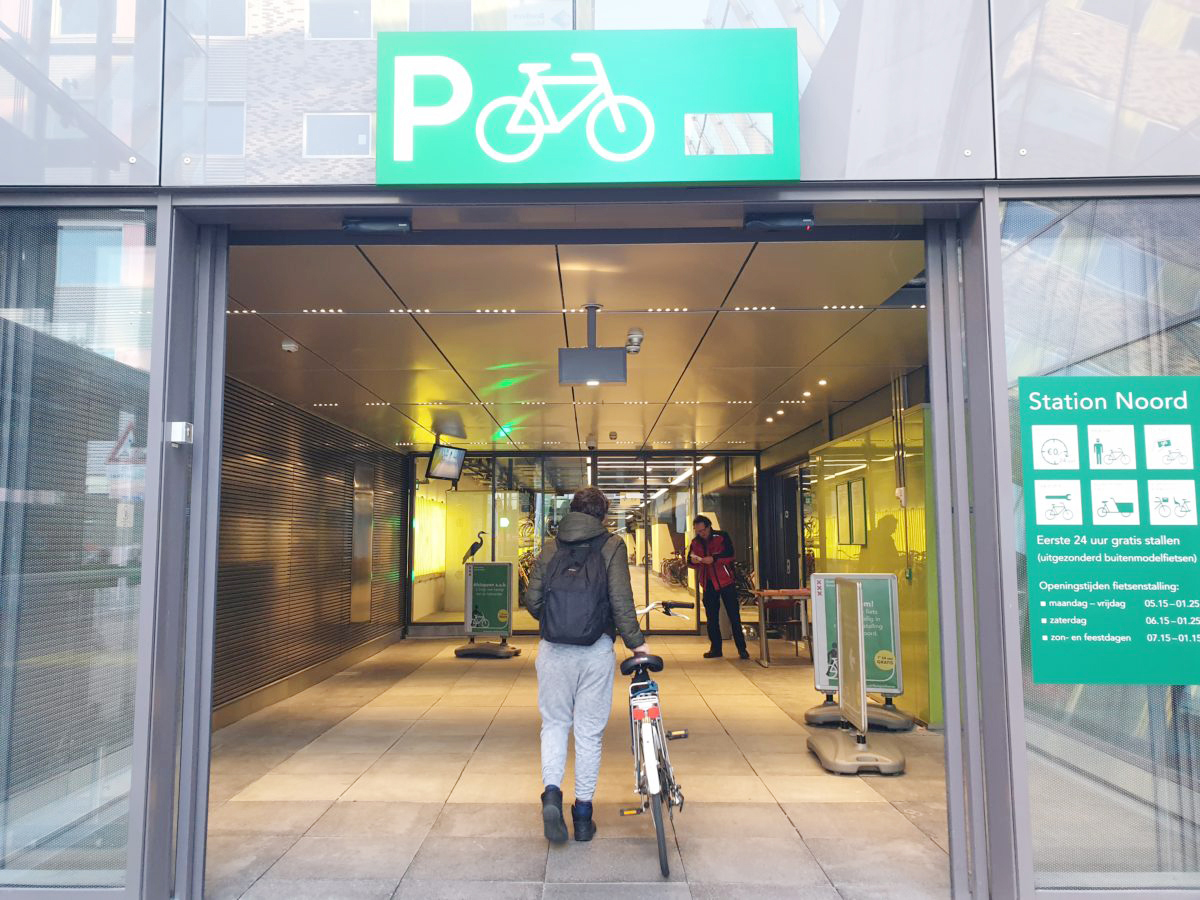
Qualities
Each theme in this checklist is detailed further by specific qualities, each focusing on a crucial aspect of the bicycle parking facility's design and functionality. For example, the Surroundings theme might include a Location bicycle parking quality, highlighting the importance of proximity to cycling routes and destinations.
Description
Each quality has a description explaining the meaning of the quality and why it is important. These descriptions help the user understand how a particular quality contributes to the effectiveness of the bicycle parking facility.
Quality prioritization
This prioritization helps determine the development effort focus during the construction of a bicycle parking facility.
- Can users reach and use the parking facility?
- Will users want to use this facility?
- Do users dare to use the facility?
This prioritization helps determine the development effort focus during the construction of a bicycle parking facility.
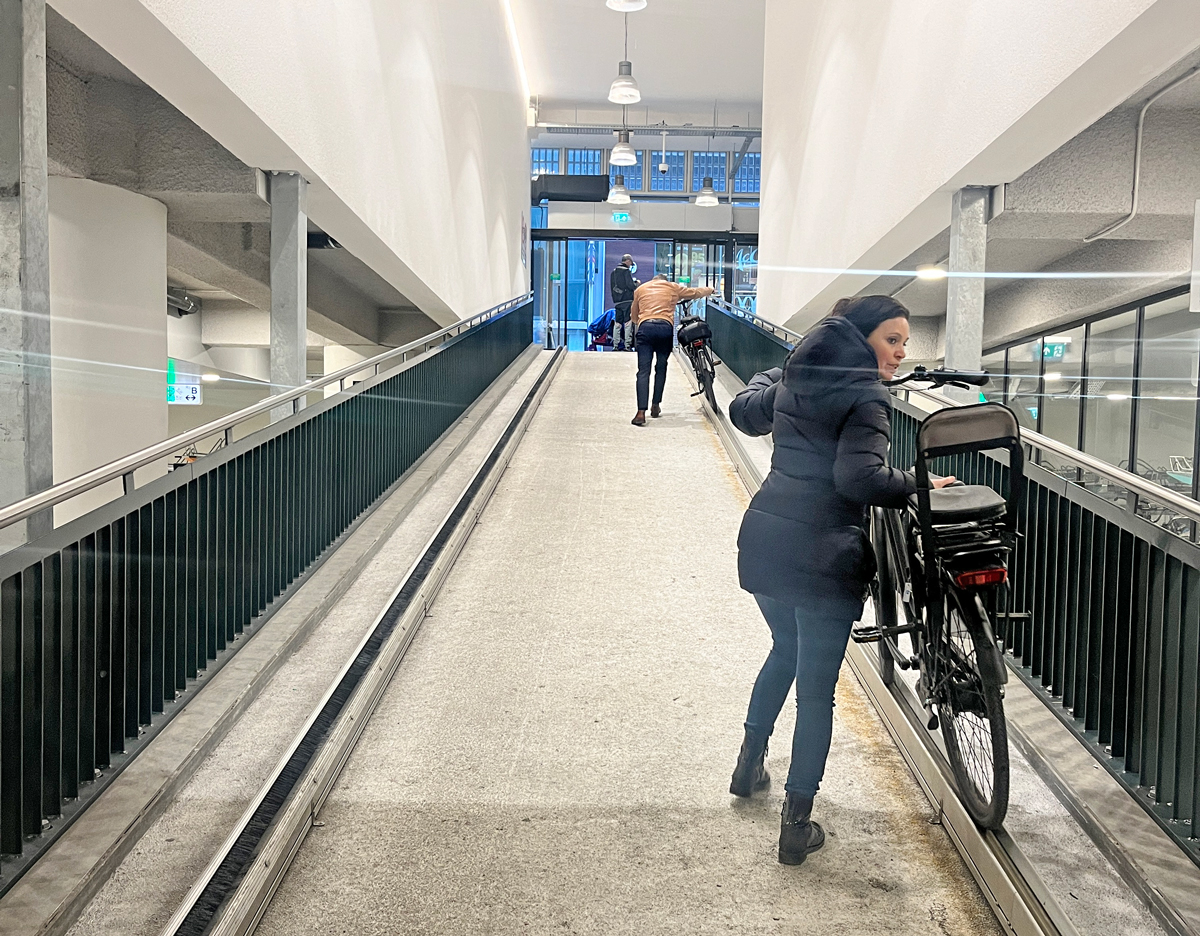
Interventions: what does this look like in practice?
For each quality criterion, a list of interventions is provided. These are concrete actions or measures required to achieve the quality. For the quality criterion "Location bicycle parking facility," interventions could include, for example:
- Ensure the facility is located close to important cycling routes and is easily accessible for cyclists.
- Ensure destinations such as shops, stations, or workplaces are within 100 meters walking distance of the facility.
The descriptions are converted here into practical interventions.
Impact of the intervention
Om snel inzicht te krijgen in het effect van elke ingreep, wordt er gewerkt met een +/– systeem. Dit geeft een visueel overzicht van hoe sterk een ingreep bijdraagt aan het behalen van de kwaliteit:
+++ This quality is crucial and must always be implemented.
++ This quality is desirable, but not strictly necessary.
+ De kwaliteit is wenselijk, maar niet per se noodzakelijk.
– This intervention is undesirable and compromises the quality of the facility.
With these visual indicators, the checklist user can easily identify priorities and areas where flexibility may be possible.
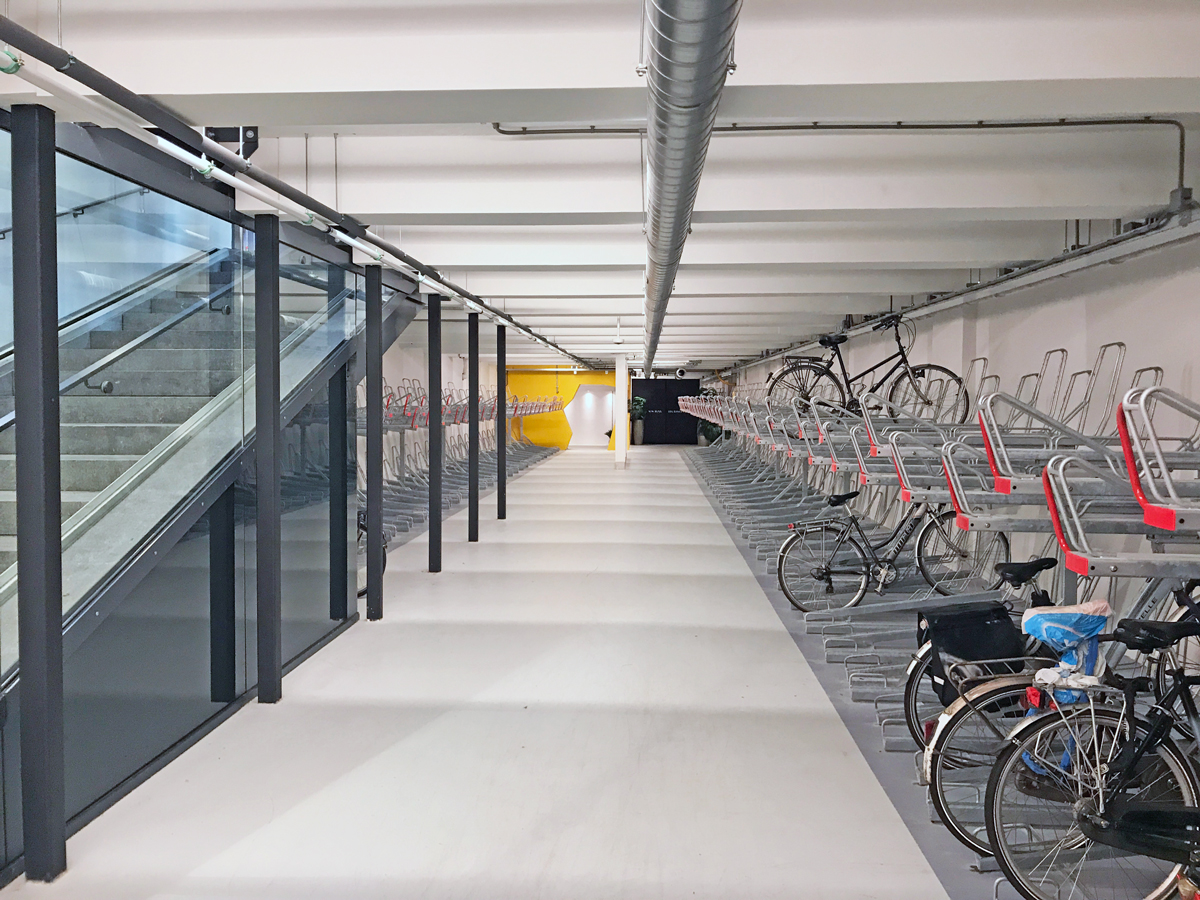
2.3 Filter
The Checklist indoor bicycle parking includes a target group filter to help tailor the facility to specific user groups and functions (see Chapter 'Building Blocks' for details). This filter clarifies which themes and requirements apply to various usage scenarios, such as residential, workplace, retail, or educational settings.
The checklist indicates the relevance of each theme to a particular target group using a checkmark (x). A checkmark signifies that the theme is important for that target group or function and must be considered in the design of the bicycle parking facility.
For example:
- Long-term parking is of great importance for target groups such as residential, work, and education, and will therefore be marked in these categories.
- Short walking distance to the destination is relevant for groceries, shopping, and hospitality, because users here want to be able to park their bicycles quickly and easily.
- Safety and social control play a crucial role in healthcare and educational institutions where users need a reliable parking environment.
Through this filter function, municipalities and developers can more efficiently determine which aspects of the checklist require extra attention and thus develop bicycle parking facilities that optimally meet the needs of the users.
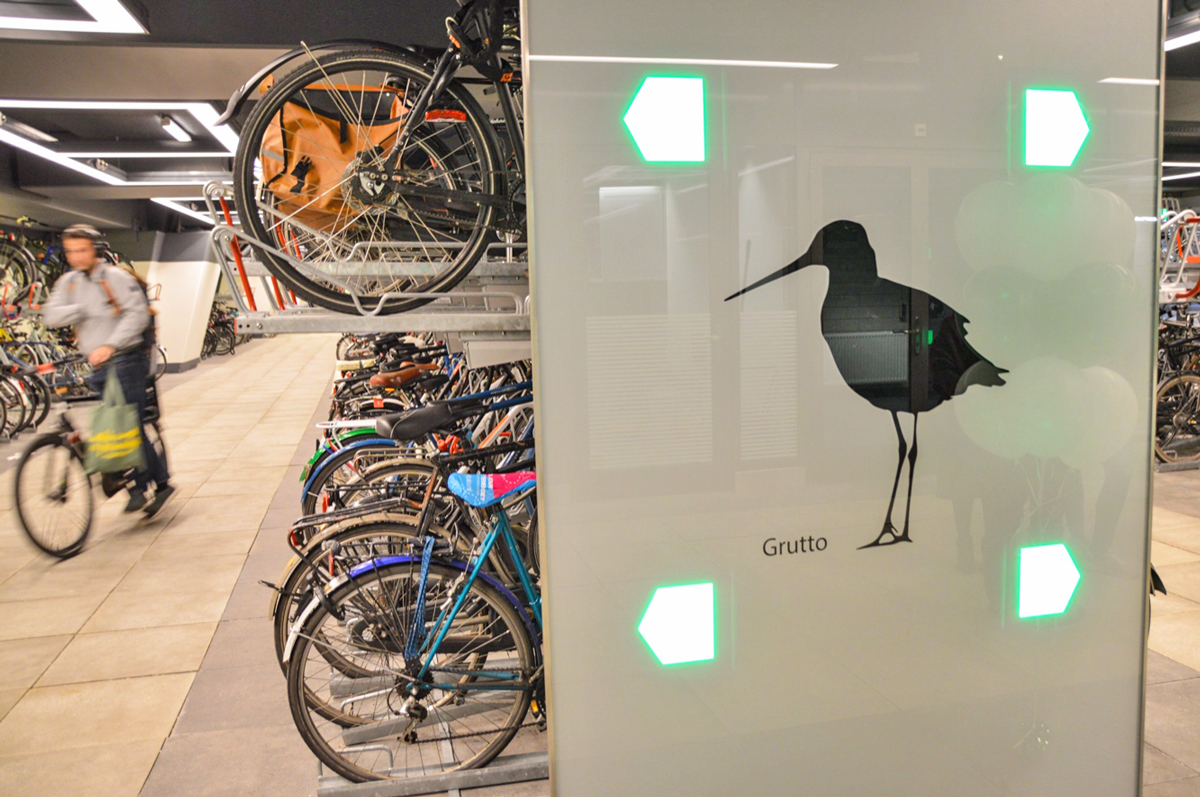
2.4 Surroundings
The theme 'Surroundings' focuses on the relationship between the bicycle parking facility and its surroundings. The location of a facility has a significant influence on its use. A facility that is logically positioned in relation to destinations (such as shops, offices, or stations) is more attractive and efficient to use.
What should you pay attention to?
- Is the bicycle parking facility clearly visible and easily recognizable as such?
- How easily can cyclists reach the facility from important routes?
- Is there sufficient social safety in the surroundings, such as sufficient illumination and social control?
- How does the facility fit into the spatial context, for example in terms of design and space use?

2.5 Access
The theme 'Access' addresses how cyclists can easily, safely, and comfortably reach and enter the facility. If access to a facility is too complicated, unsafe, or uncomfortable, cyclists will avoid it and park their bicycles elsewhere.
What should you pay attention to?
- Are the access routes wide, clear, and free of obstacles?
- How smooth is the transition from outside to inside (for example, via doors, ramps, or escalators)?
- Is the entrance to the facility easily accessible for different types of bicycles, such as cargo bikes or bicycles with child seats?
- Are the access points sufficiently secured against unauthorized use?
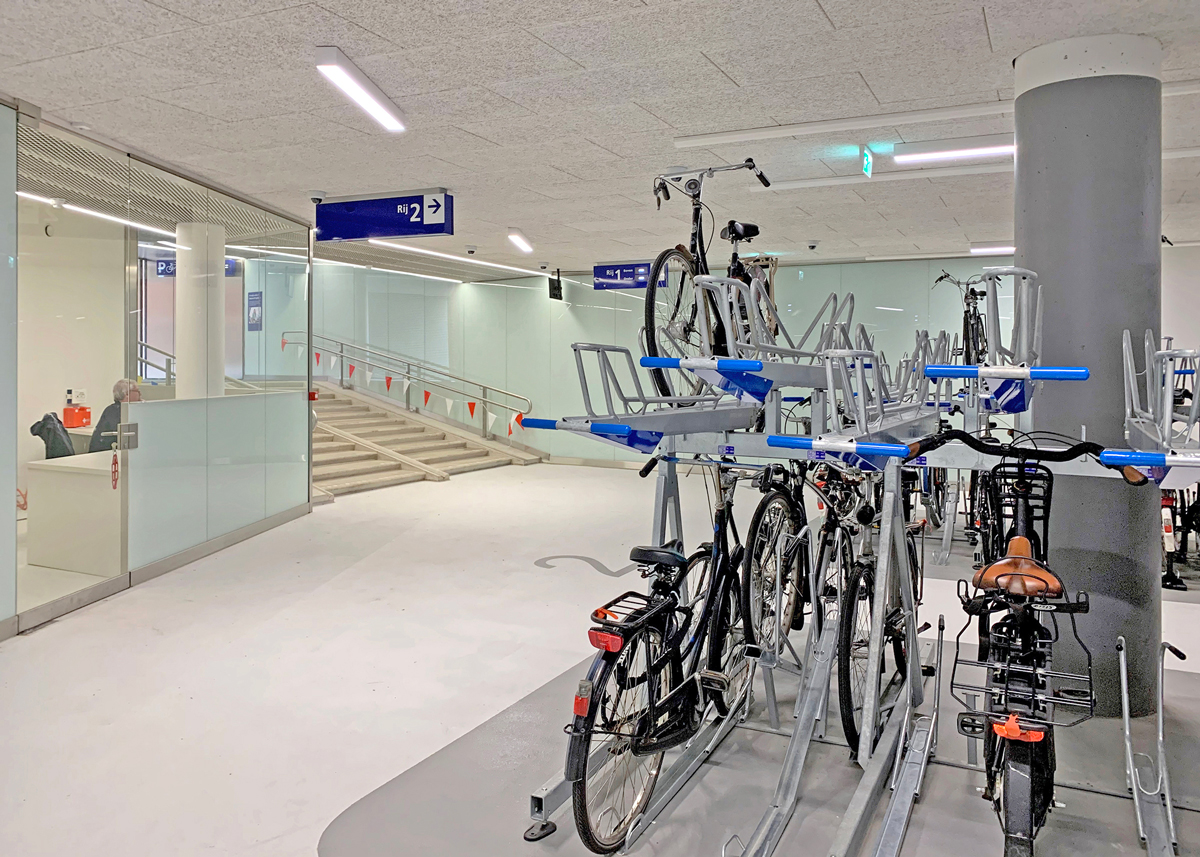
2.6 Inside the bicycle parking facility
The theme 'Inside the bicycle parking facility' focuses on the layout, functionality, and user-friendliness of the bicycle parking facility itself. A logically and efficiently designed facility is used more often and correctly. Furthermore, a pleasant and safe environment contributes to a positive user experience.
What should you pay attention to?
- Is there sufficient parking space available, and is the capacity matched to the demand?
- Are the racks user-friendly, also for electric bicycles and bicycles with luggage?
- What is the routing within the facility? Can cyclists easily find their way around?
- Are there additional facilities, such as charging points, lockers, or repair stations?
- How is the facility secured against theft and vandalism?
2.7 Operation and management
The theme ‘Operation and Management’ focuses on the management, maintenance, and ease of use of the bicycle parking facility. A well-managed facility remains attractive to users and maintains its functionality in the long term.
What should you pay attention to?
- Who is responsible for the management of the facility, and is this clearly documented?
- Is there supervision, for example in the form of personnel or CCTV?
- How is the facility kept clean and well-maintained?
- Are there clear rules and guidelines for the use of the facility, for example regarding long-term parking or incorrect parking?
- How is the occupancy rate of the facility monitored, and how are users informed about available spaces?
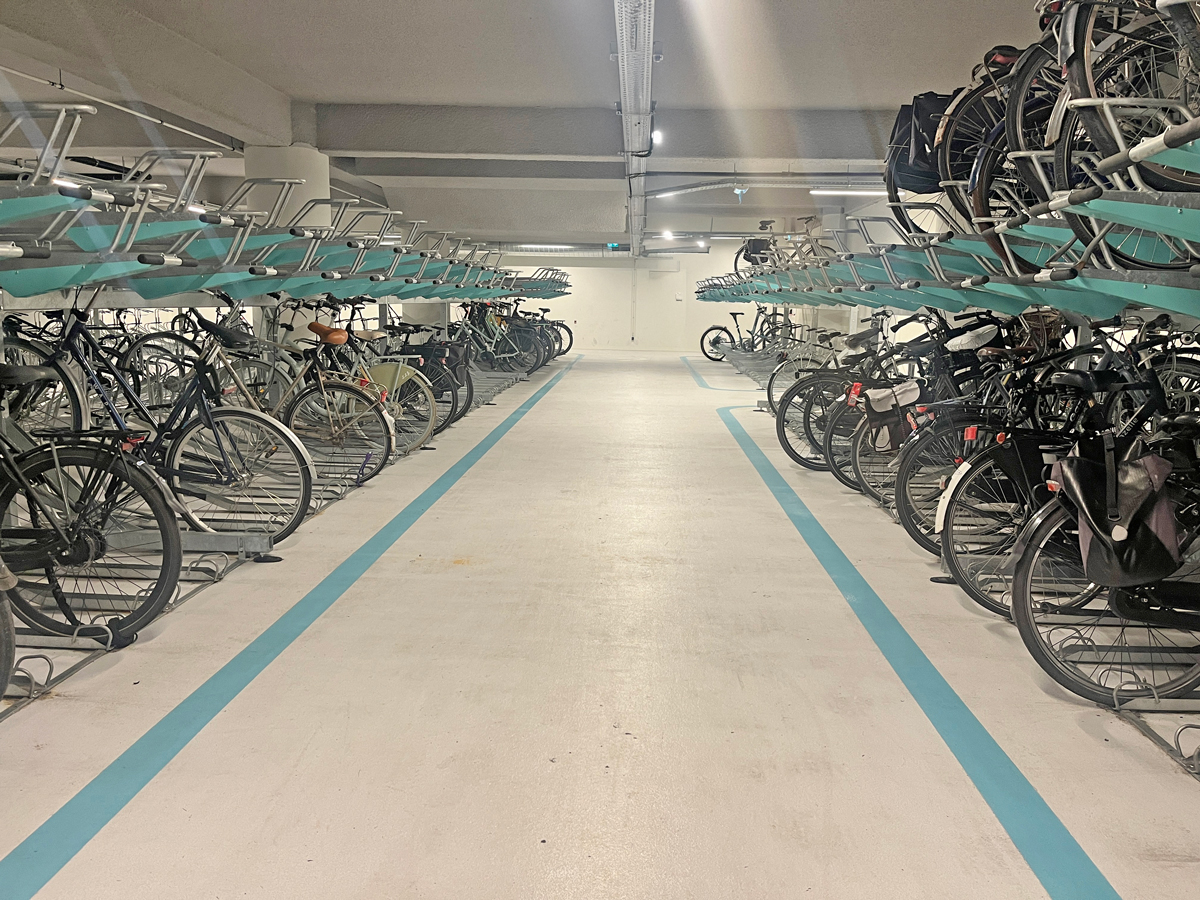
2.8 Sustainability
The theme 'Sustainability' addresses how the bicycle parking facility contributes to environmentally friendly and future-proof mobility. Encouraging bicycle use contributes to a more sustainable society, and the bicycle parking facility itself can play an important role in this.
What should you pay attention to?
- Are sustainable materials used in the construction of the facility, ensuring longevity and minimal maintenance?
- How energy-efficient are the facilities, such as lighting and charging points?
- Has consideration been given to future developments, such as the growth in electric bicycles?
- How does the facility fit into broader sustainability goals, such as reducing CO₂ emissions and promoting active mobility?
2.9 In summary
The six themes of this checklist together form a complete approach to developing indoor bicycle parking facilities that are not only functional and user-friendly, but also align with broader goals such as safety, sustainability, and efficiency. By systematically reviewing each theme, municipalities and developers can ensure that the facility not only meets current bicycle parking standards but is also readily used and prepared for the future.
